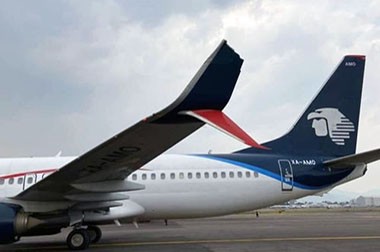Exploring the Benefits of 7075 Aluminum in Aircraft Structures
7075 aluminum alloy is one of the most commonly used high-strength aluminum alloys in the aerospace field, making it particularly suitable for aircraft structures due to its excellent mechanical properties.
7075 Aviation Aluminum is widely used in aircraft structures for its high strength, good fatigue resistance, lightweight characteristics, machinability, and heat treatment strengthening. Despite its limitations in corrosion resistance, these can be effectively addressed through appropriate surface treatments and design strategies.
Advantages of 7075 Aviation Aluminum
The following are the main advantages of 7075 aluminum in aircraft structures:
1. High Strength-to-Weight Ratio
7075 aluminum is known for its extremely high strength, even approaching that of certain steels. This strength comes from the alloying elements of zinc, magnesium, copper, and a small amount of chromium, making it an ideal material for aircraft structural components, especially in high-stress and high-load areas such as wing spars, fuselage frames, and landing gear. It can significantly reduce the aircraft's weight, improving fuel efficiency and flight performance.
2. Excellent Fatigue Strength
Aircraft experience frequent dynamic load changes during flight, so fatigue strength is critical. 7075 aluminum alloy exhibits excellent fatigue resistance, maintaining structural integrity under repeated stress. This makes it suitable for components subjected to cyclic loads, such as wing fittings and landing gear support structures.
3. Good Corrosion Resistance (After Treatment)
Although the corrosion resistance of 7075 aluminum is relatively weak, especially in untreated states, making it vulnerable to environmental corrosion, its corrosion resistance can be significantly enhanced through anodizing or other surface treatment techniques. This is especially important for long-term use in harsh environments such as marine, hot, and humid conditions.
4. Excellent Machinability
7075 aluminum has excellent machinability, meaning it can be processed with high precision through various machining methods (such as turning, milling, drilling, etc.). The alloy easily accommodates complex structural designs and can be further optimized through processes like forging and extrusion to ensure finished parts have high dimensional accuracy and surface quality.
5. Good Heat Treatment Response
7075 aluminum alloy can significantly enhance its mechanical properties through heat treatment, particularly through treatments like T6 and T73. After heat treatment, its yield strength and tensile strength can reach ideal levels while also improving crack resistance, which is critical for the long-term use of aircraft structural components.
6. Welding and Connection Methods for High-Strength Alloys
Although 7075 aluminum is not suitable for welding, its performance can be fully utilized through other connection methods such as riveting, bolting, or bonding. For critical parts in aircraft structures, mechanical connections are typically used, and the connection strength of 7075 aluminum meets the high standards of the aerospace industry.
Typical Applications of 7075 Aviation Aluminum
7075 aluminum alloy is widely used in the following areas of aircraft manufacturing:
1. Wings
Wing Spars and Internal Frames
- Load-Bearing Capability: Wings are one of the most important components of an aircraft and need to withstand enormous bending and shear stresses. The high tensile and bending strength of 7075 aluminum alloy make it an ideal material for wing spars and internal frames.
- Lightweight: Reducing weight is a key factor in wing design. The lightweight properties of 7075 aluminum alloy help improve overall aircraft performance and fuel efficiency.
- Fatigue Strength: Wings experience repeated load cycles during flight, and the excellent fatigue strength of 7075 aluminum alloy ensures the safety and reliability of wings during long-term use.
2. Fuselage Structure
Supporting Structures
- Structural Strength: 7075 aluminum alloy is used in the fuselage’s supporting structures (such as frames and beams) to provide the necessary strength and rigidity to ensure stability during flight.
- Lightweight Design: While maintaining strength, the use of 7075 aluminum alloy makes the fuselage design lighter, reducing the overall structural weight and improving aircraft performance.
- Corrosion Resistance: Although the corrosion resistance of 7075 aluminum alloy is limited, its resistance can be enhanced through surface treatments (such as anodizing), ensuring long-term use in various environments.
3. Landing Gear
Components Bearing Impact Forces
- High-Strength Characteristics: The landing gear is a critical component that withstands enormous impact forces during takeoff and landing. The high strength and toughness of 7075 aluminum alloy allow it to effectively absorb and distribute these forces.
- Durability: The landing gear needs excellent durability due to working under extreme conditions, and the fatigue strength and deformation resistance of 7075 aluminum alloy ensure its reliability over long periods of use.
- Lightweight: Landing gear made from 7075 aluminum alloy can reduce overall weight while maintaining strength, further improving aircraft performance.
4. Fasteners and Connectors
High-Strength Fasteners
- Bolts and Nuts: 7075 aluminum alloy is widely used to manufacture high-strength bolts, nuts, and other connectors in aircraft. These fasteners bear high stress when connecting the fuselage, wings, and other structures.
- Reliability: The high strength and good fatigue properties of 7075 aluminum alloy ensure the reliability of these fasteners under high-stress conditions, reducing the likelihood of failure and maintenance.
- Weight Advantage: Compared to steel, the lightweight properties of 7075 aluminum alloy reduce the overall weight of fasteners, helping improve aircraft fuel efficiency.




